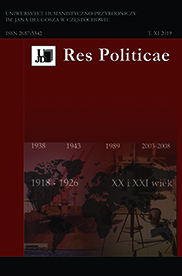Graubünden – „little Switzerland”. Political, ethnic and cultural characteristics of the canton
Keywords:
Switzerland, canton, Graubünden – “little Switzerland”, characteristics political, ethnic and culturalAbstract
Composed of 26 cantons and half-cantons, Switzerland is a country divided into very different
administrative units. The gradual expansion of central level competence took place with the autonomy
of cantons and municipalities, which is guaranteed by the Constitution of the Swiss Confederation.
The cantons have their own constitutions and unicameral parliaments, governments
and the judiciary, cooperating with the central authority, where there is a bicameral Federal Assembly, a government and courts of higher instance. The uniqueness of the Confederation is –
from the times of free communes and cantons – a sense of political consciousness of citizens who
actively participate in federal and regional instruments of direct democracy, that is, in voting in
elections and in optional and obligatory referendums and in folk initiatives, where the sovereign’s
voice was and is decisive for legislative processes, also on controversial issues. Graubünden is the
most diverse in terms of ethnic, cultural and linguistic canton, which was influenced by its turbulent
history. The canton was created from the inhabitants of the alpine valleys and from the incoming
settlers representing various European cultures. There are three official languages: German,
Italian and Rhaomorian, which was also officially recognized at the federal level. Offices
and non-governmental and regional organizations of the Graubünden care about the cultural, ethnic
and linguistic heritage, as well as other communities living in the canton. Because of this diversity,
the Grisons, not without reason, is called “little Switzerland”.


